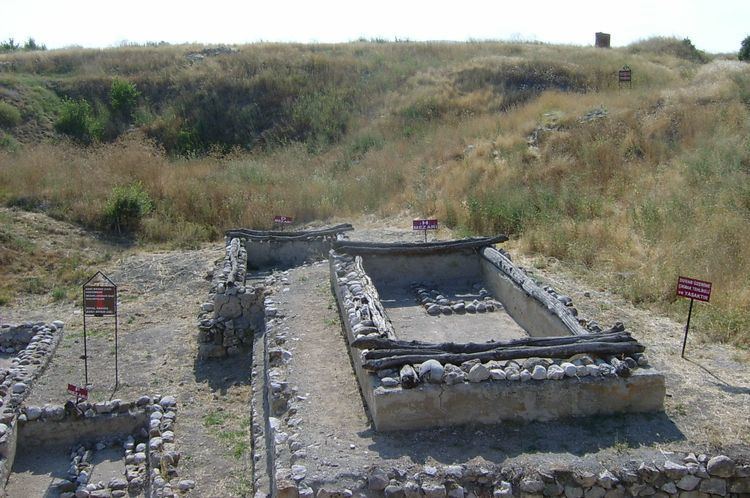 | ||
Alishar Hüyük (in modern Yozgat Province, Turkey) was an ancient Near Eastern city. It is near the modern village of Alişar, Sorgun.
Contents
Map of Ali%C5%9Far K%C3%B6y%C3%BC, Turkey
History
Alishar Hüyük was occupied beginning in the Chalcolithic Period, through the Bronze Age and the Hittites, and into Phrygian times. A number of Hittite-era cuneiform tablets in Old Assyrian of the Cappadocia type were found there. Mention in those tablets of the town Amkuwa has caused speculation that the site is the Ankuwa mentioned in other Hittite texts.
Archaeology
The site was excavated between 1927 and 1932 by a team from the Oriental Institute of Chicago. The work was led by Erich Schmidt. Excavation resumed in 1992, led by Ronald Gorny as part of the Alisar Regional Project, though most of the work has been at nearby Çadır Höyük.
Cadir Hoyuk
About 12km northwest of Alishar Huyuk, there's another important archaeological site named Cadir Hoyuk (Çadır Höyük in Turkish alphabet).
Recent excavators of Cadir Hoyuk have identified this site tentatively with the Hittite city of Zippalanda.
Evidence of the first known settlement at Cadir Hoyuk has been radio-carbon dated to the Early Chalcolithic (5300-4500 BC); nevertheless the occupation may well be even earlier than that, and go back to Neolithic (ca. 5500 BC).
Cadir Hoyuk appears to have flourished during the Middle and Late Bronze Age (2000-1100 BC).
